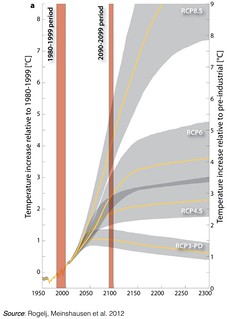

| Visitors Now: | |
| Total Visits: | |
| Total Stories: |

| Story Views | |
| Now: | |
| Last Hour: | |
| Last 24 Hours: | |
| Total: | |
Why a 4°C Warmer World Must be Avoided (part 2) [Stoat]
 Previously I criticised this world bank report, because of some injudicious choice of phrasing. However, various people suggested that I could consider actually reading the report and seeing what it had to say. Obviously I’m not going to do that in detail, but I can try skimming it. I wrote some stuff whinging that their use of “likely” and “could” was ill-defined, but decided that was boring, so deleted it and started again.
Previously I criticised this world bank report, because of some injudicious choice of phrasing. However, various people suggested that I could consider actually reading the report and seeing what it had to say. Obviously I’m not going to do that in detail, but I can try skimming it. I wrote some stuff whinging that their use of “likely” and “could” was ill-defined, but decided that was boring, so deleted it and started again.
Oh, and yes this is yet another excuse for not writing about sea ice; but I can at least formally acknowledge losing my bet with Neven (and one of them with Crandles).
How Likely is a 4°C World?
They ask. And its a good question, well at least if you’re writing a report about a +4oC world its an essential question. So, what’s their answer?
The emission pledges made at the climate conventions in Copenhagen and Cancun, if fully met, place the world on a trajectory for a global mean warming of well over 3°C. Even if these pledges
are fully implemented there is still about a 20 percent chance of exceeding 4°C in 2100 [10]. If these pledges are not met then there is a much higher likelihood—more than 40 percent—of warming exceeding 4°C by 2100…
I’m not sure that’s a desperately useful way of looking at future CO2 trajectories, but its plausible, at least to the sort of people that probably went to C or to C and took them seriously (I did neither; that reminds me, Timmy has another excellent article about carbon tax which you should certainly read, unless you already agree with everything he says there. Perhaps …Texas becomes uninhabitable for weather reasons not cultural ones… is enough to tempt you?).
Footnote 10, which is their methodology, is interesting:
Probabilities of warming projections are based on the approach of (Meinshausen et al. 2011), which involves running a climate model ensemble of 600 realizations for each emissions scenario. In the simulations each ensemble member is driven by a different set of climate-model parameters that define the climate-system response, including parameters determining climate sensitivity, carbon cycle characteristics, and many others. Randomly drawn parameter sets that do not allow the climate model to reproduce a set of observed climate variables over the past centuries (within certain tolerable “accuracy” levels) are filtered out and not used for the projections, leaving the 600 realizations that are assumed to have adequate predictive skill.
I’ve heard of this idea, but its not something I’m used to seeing being used. I assume it produces answers not too dissimilar to the usual throw-a-stack-of-GCMs-against-the-wall kind of stuff in IPCC, and who is to say which is better. Probably they should all be looked at more as representative and scenario-generating rather than serious attempts to constrain likely future ranges. But then, I’m getting increasingly out of touch with this stuff. Ask that nice Dr Annan instead.
But anyway: what I’d take from that, summarised in a way I could agree with, is that given the CO2 scenarios we can’t rule out, it is possible but less than even-odds-likely, that we’ll exceed 4oC by 2100. Note that (their fig 20) RCP 6 is somewhat lower than A1B from the olde dayes.
They then point out that lots of CO2 leads to ocean acidification as a problem of its own, which I assume is correct (I didn’t read it, or the drought stuff, or the cyclones stuff). And so on. It becomes clear that this is mostly the std stuff, and they are drawing from the std resources that you’d hope they’d use.
So if you strip away the over-emotive language used in some parts of the report, most obviously in its foreword, you’re left with this from the executive summary:
A 4°C world would be one of unprecedented heat waves, severe drought, and major floods in many regions, with serious impacts on ecosystems and associated services. But with action, a 4°C world can be avoided and we can likely hold warming below 2°C
which seems fair enough (apart from the extraneous comma in the last sentence, of course, which isn’t fair at all).
2012-11-23 16:00:29
Source: http://scienceblogs.com/stoat/2012/11/23/why-a-4c-warmer-world-must-be-avoided-part-2/
Source:


